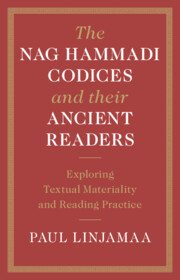Contents
2The Find Story and the Ethics of Postmodern Manuscript Archaeology
3The Construction of Codex I: Scribal Errors as Clues to Context
4Notes Made by Monks: The Marginal Markings in Codex I and Codex VIII
6The Sacred Symbols in the Nag Hammadi Codices: Books as Weapons in Demonic War
7Textual Fluidity and Multiple Versions in Monastic Textual Practice
Conclusion: The Nag Hammadi Codices from a ‘Textual Community’ Perspective

